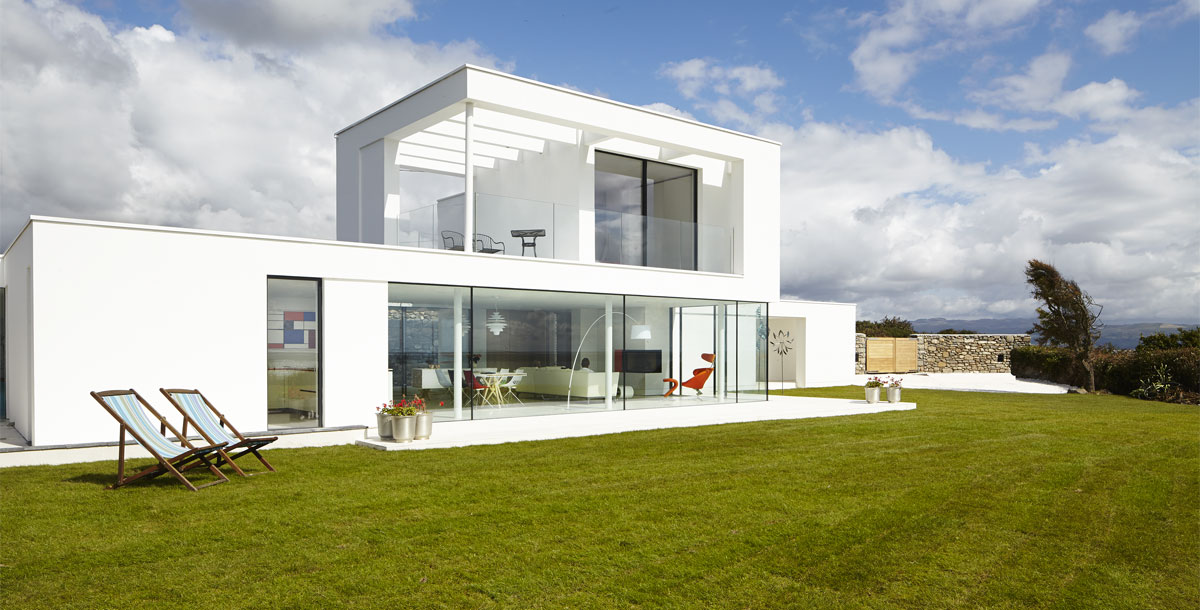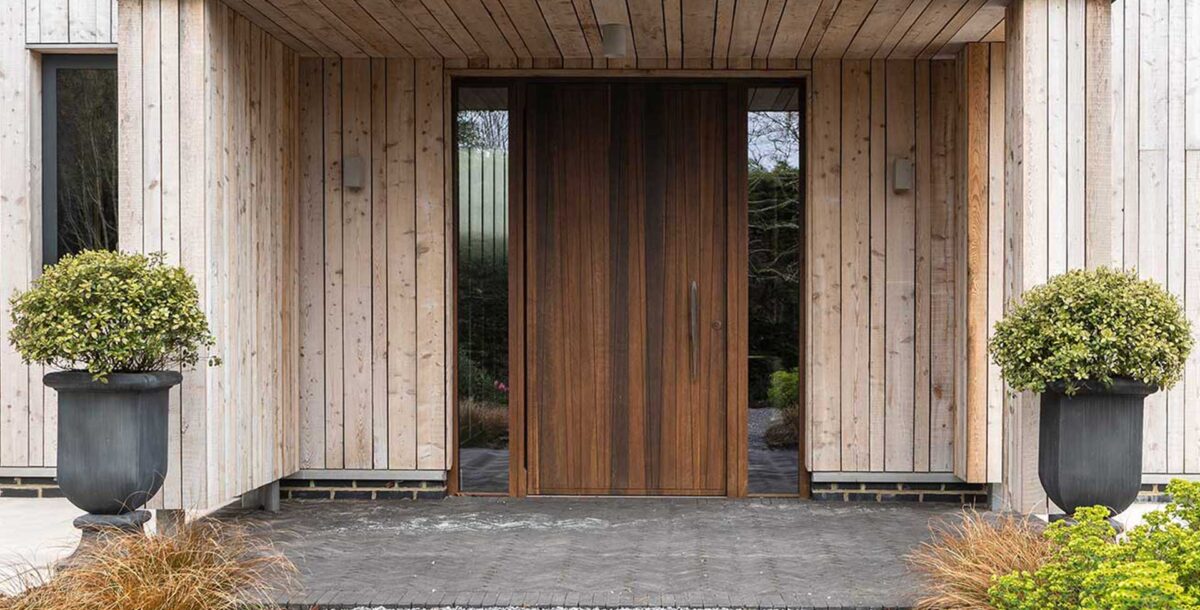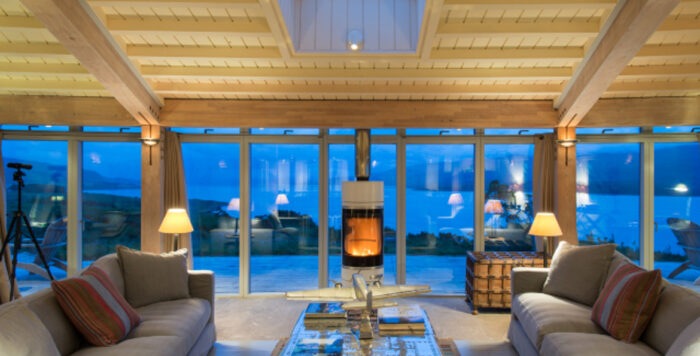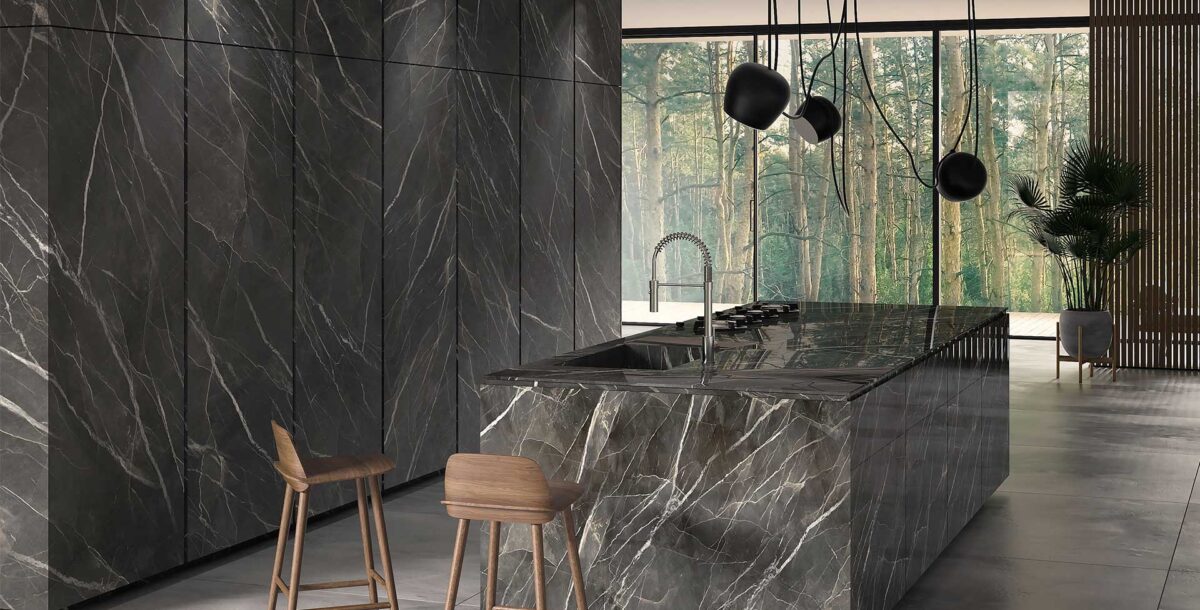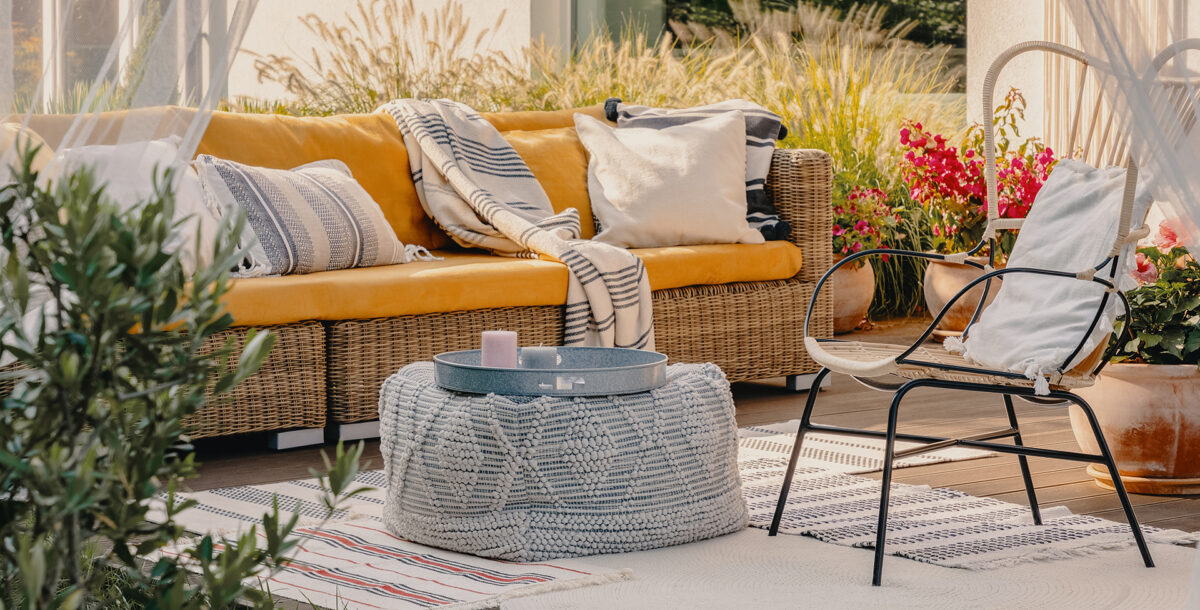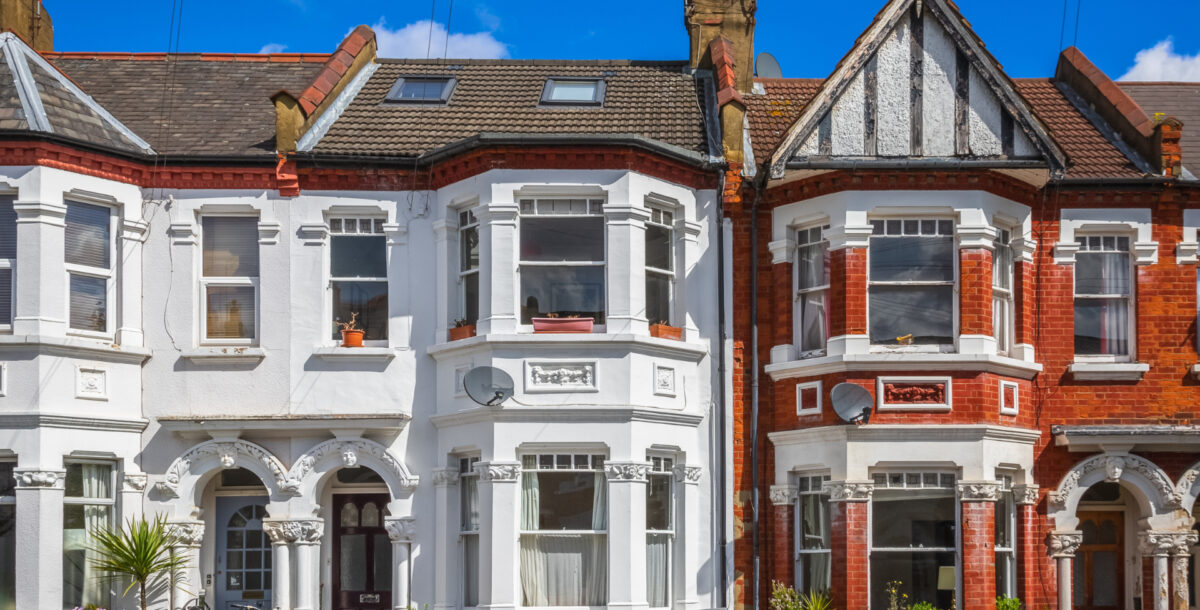A Modernist clifftop home in North Wales
Building this home fulfilled a lifelong dream of living by the sea
Sometimes, approaching a project from a different angle can yield the best results, which is something Kay Ralph and Rob Hodgson became all too familiar with during the construction of their Grand Designs cliff house in North Wales.
They had originally been pitching a commercial project on an existing stately home and had never considered a new-build until Kay came across the details for an old cottage buried in a pile of estate agents’ flyers.
‘We came to the cliff-side plot on a beautiful summer’s day, and thought that perhaps we should think about focusing on something completely different from the traditional manor house we’d been chasing,’ says Rob. ‘So, on the spur of the moment we decided to build a new, contemporary property. There was a cottage on site, but it was completely derelict and very close to the edge of the cliff, so renovation wasn’t a feasible option.’
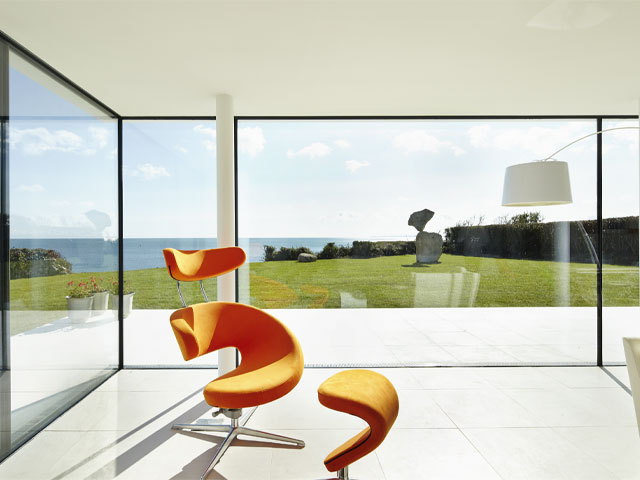
The bright orange Peel chair in the living room is mirrored by the balancing rock sculpture in the garden, designed by Adrian Gray. Photo: Andrew Wall
‘A lifelong dream of living by the sea’
The couple’s resolve was deepened by the spectacular view, which takes in both mountains and sea. ‘The location is just a couple of hours from our original property, so we’ve spent many family holidays here, and over the past couple of years we had become really attached to the rugged beauty of this part of the world,’ says Rob. ‘It also fulfilled Kay’s lifelong dream of living by the sea.’
They decided to build something completely different from their previous, more traditional house in Cheshire. Rob is an events organizer while Kay works in research and development, but it was their shared love of Modernist art and architecture that inspired their initial design.
The pair also wanted their new-build to be low maintenance. ‘We will eventually retire here, and I’m done with clutter,’ explains Kay. ‘I’m hoping a Modernist house will require much less maintenance than our old Edwardian property.’
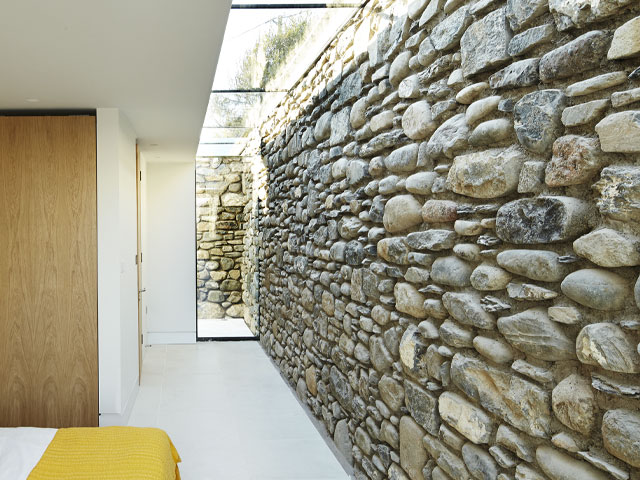
Splashes of bold colour break up the predominantly white palette. Photo: Andrew Wall
The key to a Modernist build
Rob knew the key to a Modernist building that stayed away from pastiche was to find a passionate architect with experience in this type of design. He embarked on an internet search and a thorough round of interviews to find John Boardman and Keith Hamilton at Stephenson ISA Studio architects.
‘John was very in tune with what we wanted and knew what we were trying to create almost instinctively,’ says Kay. There’s no question that the design of their glass-dominated development is driven by its views. One window looks out across Snowdonia while the bedroom balcony looks over the sea across the bay to Pwllheli.
With such dramatic views, it would have been unthinkable not to build a structure to showcase them appropriately, so Rob and Kay decided to take the plunge, opting for a design reminiscent of Mies van der Rohe and Richard Meier. ‘We went the whole hog and created something very pure in architectural style, because that seemed adventurous and a real statement,’ says Rob.
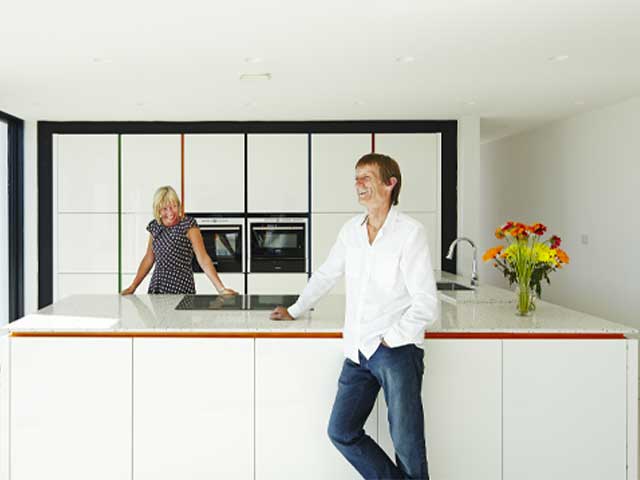
Kay’s sister designed the minimalist kitchen, taking inspiration from Mondrian, one of the couple’s favourite artists. Photo: Andrew Wall
Getting planning permission
Since no similar buildings seemed to have been built nearby, Rob and Kay were nervous about applying for planning consent; they lacked locality-based reference material to support their case in this rural area.
Fortunately, permission was granted without hesitation. ‘Gwynedd Council was passionately supportive and we didn’t have any problems with them at all,’ says Kay. ‘It regarded this as a development with a high quality approach in terms of design and architecture, so they were prepared to be flexible in regards to the guidelines.’
With permission granted, the couple’s next challenge was to find a builder. Their search led them to a Bangor-based company Inner World, which specialises in historic buildings. The firm was excited by Rob and Kay’s project and was keen to take on a contemporary house. Construction started in November 2012 and spanned almost two years, which meant working through two very severe winters.
Rob enlisted the help of a neighbouring farmer and his tractor to help move materials to the site, which was down an unfinished track with a low railway bridge. ‘Every time I needed to get something under the bridge, I’d call him and he would bring his tractor forklift to transport it under the bridge for me. Ninety-nine per cent of the reaction locally has been supportive, which is fantastic for such a bold design.’

The cliff house was designed to make the most of the views. Photo: Andrew Wall
The right materials
To get the cuboid, geometric silhouette that defines Modernist architecture, and to achieve the strength required in such an exposed location, the house was constructed from a strong steel frame with a timber-framed façade and rendered blockwork. In order to achieve the precise angles of the exterior, a special German render was required to stop the outside of the building cracking at the joins.
Kay and Rob were keen to be as respectful to the environment as they could; in addition to reusing all the stone from the site, the building has high-performance glazing and very high levels of insulation, which helps keep the house warm, and an air-source heat pump which means it uses less energy. The area itself is of scientific interest, meaning that waste water has to be processed and sterilised on site to make it fit for draining onto the beach.
As a nod to the location’s history, the architects have wrapped the perimeter of the house in a honey-toned wall made with stone reclaimed from the original building, which lends some of the character of the original cottage to the new home.
‘I think the contrast between the traditional stone and modern render really sets each material off,’ says Rob. ‘At one point there is a section where the white rendering and stone wall touch; John Boardman calls it kissing.’
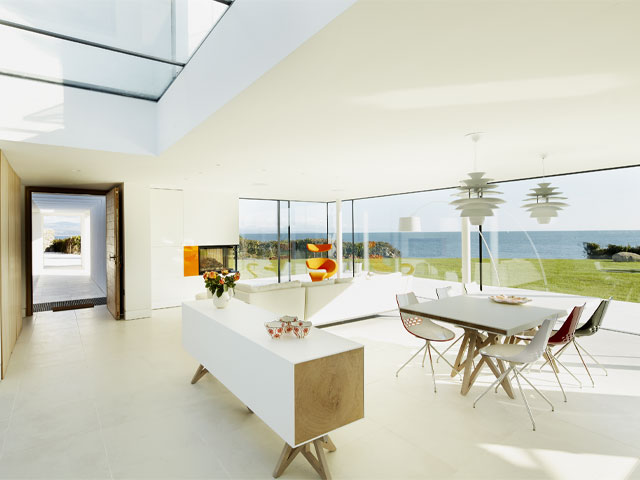
Rob and Kay plan to retire in their Grand Designs North Wales cliff house. Photo: Andrew Wall
Inside the North Wales cliff house
As you walk through the front door, it’s immediately noticeable that there are almost no interior walls on the ground floor of the house, which allows uninterrupted views of the surrounding scenery. On the left is the open-plan living area, which contains a sofa and coffee table and a distinctive Varier Peel chair in bright orange, which is part abstract sculpture, part chair and is a clue to the couple’s love of modern art.
Behind the living area are the white dining table and chairs, the backs of which are in a range of vibrant colours. ‘As it’s all very white, I felt the house could look quite clinical,’ says Kay. ‘The bright chairs reflect some cheerful colour into the kitchen, and pick up on the coloured strips of the units.’
The Mondrian-inspired kitchen was designed by Kay’s sister who runs a kitchen-design studio. ‘It was lovely having someone so close to me design such an integral part of the house, and also to have her there during the filming, just for a bit of moral support,’ says Kay. A Mondrian-style artwork hangs on the kitchen wall, created for Rob and Kay by Boardman from the architectural floorplan.
To the right of the kitchen are two downstairs bedrooms, both roughly the same size, one framed by the honey-hued stone wall, the other with a breath taking view of the sea. Upstairs is Kay and Rob’s master bedroom suite, which leads out to a shaded balcony surrounded by a reinforced glass balustrade. The built-in bathroom is positioned to take in views of the sea in one direction, and thanks to the addition of a roof light, the night sky overhead.
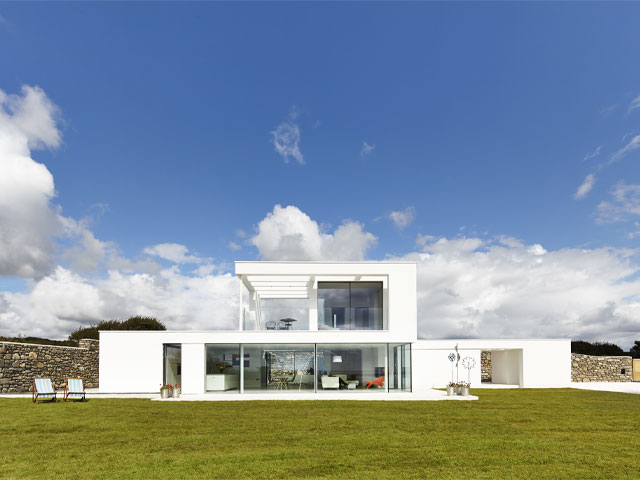
Sliding windows with minimal frames open up the Grand Designs North Wales cliff house to the outside. Photo: Andrew Wall
A landmark building
Outside in the courtyard to the rear of the house is the couple’s favourite aspect of the build. ‘I love looking at the courtyard with the stone wall behind it; it’s so beautiful and the colours and tones change constantly with the differing shades of light,’ says Kay.
‘It’s like having a colossal, graphic framed picture in your living room.’ The lifespan of this incredible cliff-side build is estimated to be anywhere between 60 and 120 years depending on the rate of coastal erosion. The couple believe the joy of living in such a beautiful location outweighs these concerns and they are simply looking forward to enjoying the house while they can.
Rob says he’ll be doing his utmost to make sure the house endures for future generations of the family. ‘It’s a landmark building that has been well received by the community, so I’ll be doing everything I can to preserve it and make sure it lasts as long as it possibly can.’

